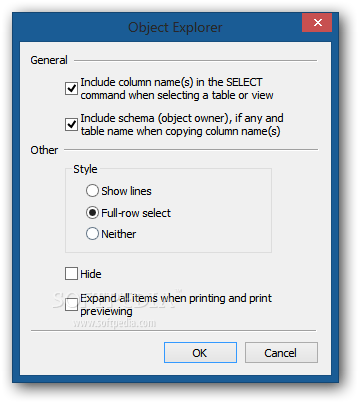Foxpro Oledb Drivers For Mac
Some of you may already know that and provided a new OLEDB driver. However, it can be a headscratcher to figure what you should be using. When we were using SQL Server Native Client, it was pretty easy — the Native Client had both OLEDB and ODBC shipped in a single DLL file, making for easy installation. All you had to make sure you were using the right version of Native Client. With SQL Server now available on Linux, it no longer makes sense to distribute Native Client, since Linux in general don’t support OLEDB, which is mainly a Windows-only technology used mainly by Microsoft products. For that reason, Microsoft has not opted to combine both ODBC and OLEDB into a single DLL.
If your application contains VBA code that uses both DAO and ADO, then you would need to install two different providers to get the latest feature and supports for both ODBC and OLEDB respectively. ADVERTISING The naming convention can be a bit confusing because many people will loosely refer to various drivers as simply just “ODBC driver” or “OLEDB provider”. So let’s get the names straight. We’ll start with identifying the deprecated versions and then look at the current versions.
Deprecated Versions By default, all versions of Windows come with two SQL Server data access client libraries pre-installed: Microsoft OLE DB Provider for SQL Server (also known as SQLOLEDB) Microsoft SQL Server ODBC Driver (also known as SQLODBC) It is very important to note that those are DEPRECATED. Those are targeting SQL Server 2000 and lack new features introduced since. Windows will not ship any new drivers or update those via its Windows Update. Going forward, you, the application developer, must provide the drivers of appropriate version to use with your application, rather than relying on the ones provided by Windows. Do NOT use those in your current development. Current Versions With that out of way, let’s look at the correct ODBC driver and OLEDB provider we may want to use. At the time of writing, the ODBC Driver 17 for SQL Server is the latest driver and can be downloaded in the provided link.
Foxpro Driver Windows 10
The connection string looks like this. Provider = MSOLEDBSQL; Server = myServer; Database = myDataBase; 32-bit or 64-bit? One common question that comes up is whether one should install the 64-bit or 32-bit versions of the driver. The answer is same regardless of which versions we are discussing and it’s always dependent on the OS, not the Office.
Mysql Oledb Driver
Therefore, if you are running 32-bit Access on 64-bit Windows, you would want to install 64-bit drivers. This will include the 32-bit components needed for the 32-bit Access to run with.
Penetration testing tools for mac. • Acunetix Acunetix is an efficient web vulnerability scanner for web applications. This Pen- Testing tool uses Dictionary, Brute Force and Cryptanalysis attacks, network sniffing, cache uncovering and routing protocol analysis techniques to do cracking. Cain & Abel is developed only for Microsoft environments.
Can I use SQL Server Native Client? Officially, SQL Server Native Client are supported up to SQL Server 2012. However, you can still use it to connect to newer versions of SQL Server. There are several features that are missing from the Native Client.
Oledb Driver Access

As time proceed, they will become increasingly unsuited for your needs, especially with Azure technology. Though you might be able to continue using it for your existing applications, we encourage that you plan new developments using the separate ODBC and OLEDB drivers and migrate your existing applications when possible. You must migrate when there’s a need to make use of new technologies that are only supported by those newer drivers (examples include Azure Authentication or Always Encrypted feature). Do I need both? Only if you do use both DAO and ADO. Generally speaking, all forms and reports and Access queries are always using DAO. The only time you might use ADO is within VBA code.
So if you do not use ADO, you can get away with only the ODBC driver and that should suffice for your need. That means when you normally link your tables, you would use code similar to the following.
Comments are closed.